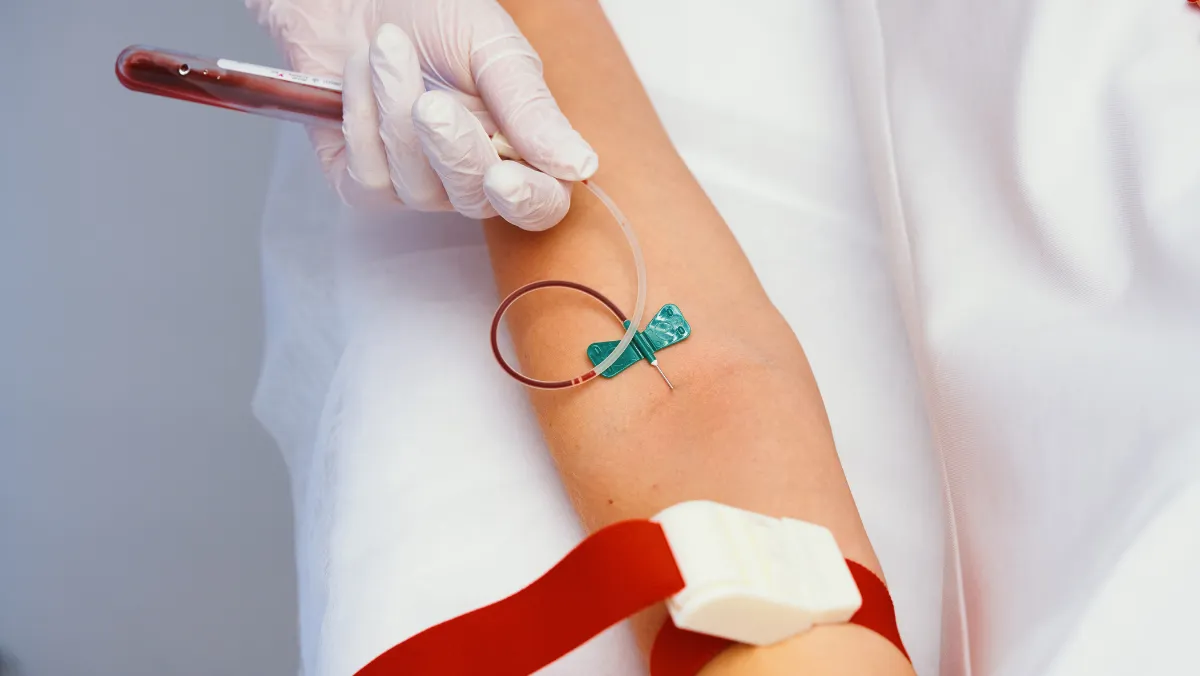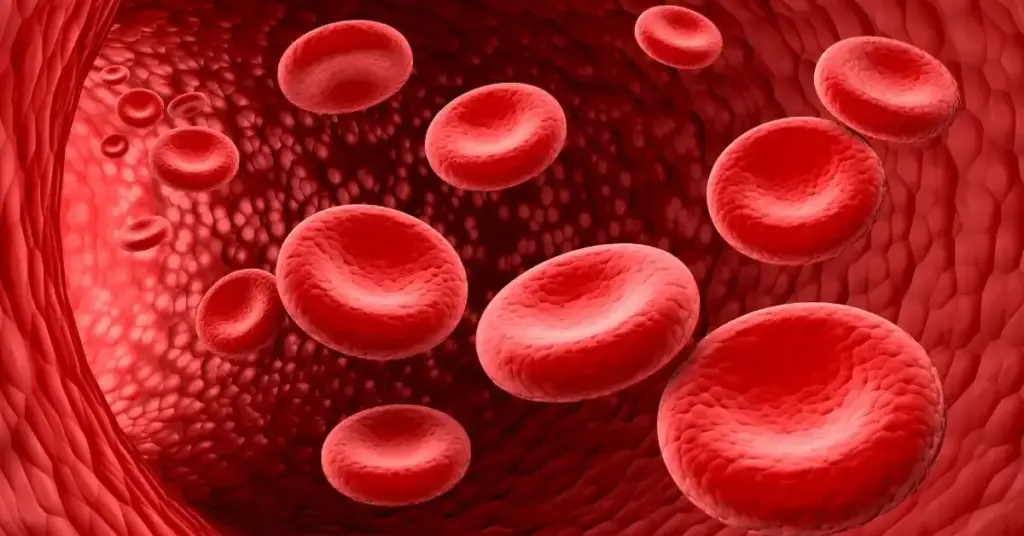
Hemostasis and thrombosis are critical physiological processes that maintain the balance between bleeding and clotting in the body. Hemostasis involves a tightly regulated response to vascular injury, enabling clot formation to prevent blood loss while preserving blood flow elsewhere. Thrombosis, however, is the pathological formation of clots within blood vessels, which can obstruct circulation and result in severe complications like stroke, pulmonary embolism, or myocardial infarction.
Understanding these processes is essential for diagnosing and managing bleeding disorders and thrombotic conditions. The balance between the two is delicate—an excess leads to dangerous clots, while a deficiency results in uncontrolled bleeding. Advances in diagnostic testing and therapeutic strategies have improved the ability to detect and treat abnormalities in hemostasis and thrombosis, especially with newer anticoagulants, monitoring techniques, and genetic testing. Proper evaluation and treatment are key to reducing long-term risks and improving patient outcomes, especially in individuals with a predisposition to clotting disorders.
Deep Vein Thrombosis (DVT) is a condition where a blood clot forms in a deep vein, typically in the legs. If untreated, this clot can travel to the lungs, leading to a life-threatening pulmonary embolism. Recognizing early signs such as leg swelling, pain, warmth, and redness is crucial for prompt intervention. DVT can occur after prolonged immobility, surgery, or due to inherited clotting disorders.
Management typically includes anticoagulation therapy with heparin or direct oral anticoagulants, compression stockings to manage symptoms, and lifestyle modifications to reduce recurrence risk. In severe cases, thrombolytic therapy or surgical interventions like thrombectomy may be considered. Long-term follow-up ensures that complications are minimized and that patients maintain mobility and vascular health.
Anticoagulation therapy is essential for preventing and managing blood clots. It plays a vital role in patients with DVT, atrial fibrillation, mechanical heart valves, and other thrombotic conditions. This therapy involves medications that reduce the blood’s ability to form clots without entirely eliminating the clotting process.
Patient education is crucial, especially regarding dietary restrictions with warfarin and the importance of medication adherence. Bleeding risk is a significant concern; hence, risk assessment tools are used to weigh the benefits versus potential adverse effects. In emergencies, reversal agents such as vitamin K or andexanet alfa can counteract the effects of anticoagulants. With newer therapies offering greater convenience and fewer dietary interactions, personalized therapy plans are helping patients live longer, healthier lives with reduced thrombotic risks.
Platelet function disorders affect the ability of platelets to aggregate and form stable clots. These disorders can be inherited or acquired and often manifest through excessive bruising, prolonged bleeding from minor cuts, or heavy menstrual bleeding. Proper diagnosis and treatment are essential to avoid complications during surgeries or after injuries.
Careful evaluation helps tailor the treatment approach, minimizing the bleeding risk and optimizing patient safety. Patients with platelet disorders often require coordinated care during dental procedures, childbirth, and invasive surgeries. A comprehensive care plan involving hematologists and surgical teams ensures that bleeding is controlled, allowing individuals to lead normal, active lives with minimal restrictions.
Hypercoagulability workups are diagnostic assessments aimed at identifying underlying causes of increased clotting tendencies in patients. These tests are particularly useful in individuals with unexplained thrombotic events, recurrent pregnancy losses, or a strong family history of clotting disorders. Understanding the genetic and acquired contributors enables targeted therapy and risk management.
Identifying a hypercoagulable state can change the treatment plan significantly, often necessitating lifelong anticoagulation in high-risk individuals. A structured approach to testing ensures clarity in diagnosis while avoiding unnecessary interventions. Patient counseling and family screening can help prevent future events and support long-term health through proactive management.
Monitoring anticoagulation therapy is essential to ensure safety and effectiveness, particularly with drugs like warfarin that have a narrow therapeutic window. Warfarin monitoring involves regular measurement of the International Normalized Ratio (INR) to maintain optimal clot prevention without causing bleeding. Unlike warfarin, NOACs (Non-vitamin K Oral Anticoagulants) like dabigatran, apixaban, and rivaroxaban offer fixed dosing and less frequent monitoring.
The choice between warfarin and NOACs depends on clinical factors such as patient comorbidities, ease of monitoring, and affordability. Effective monitoring supports the safe use of these medications and helps prevent adverse outcomes. Clinicians must carefully assess each patient's profile to provide the most suitable and evidence-based anticoagulation strategy.
Hemostasis and thrombosis are cornerstones of vascular health, influencing outcomes across a range of medical conditions—from routine surgeries to life-threatening emergencies. Precise understanding and management of clotting dynamics ensure the prevention of complications like stroke, deep vein thrombosis, or severe bleeding. Whether through diagnostic evaluations, anticoagulation therapies, or advanced monitoring, modern medicine offers effective tools to keep these processes in check.
At Kannappa Memorial Hospital, our commitment to excellence in hematology and vascular care ensures every patient receives tailored, evidence-based management. Our multidisciplinary approach, supported by state-of-the-art diagnostics and compassionate clinical expertise, helps individuals live confidently while minimizing the risks of clotting or bleeding disorders. Prioritizing early diagnosis, accurate monitoring, and patient-centric therapy remains the key to long-term success in managing hemostatic and thrombotic challenges.
Hemostasis and thrombosis are critical physiological processes that maintain the balance between bleeding and clotting in the body. Hemostasis involves a tightly regulated response to vascular injury, enabling clot formation to prevent blood loss while preserving blood flow elsewhere. Thrombosis, however, is the pathological formation of clots within blood vessels, which can obstruct circulation and result in severe complications like stroke, pulmonary embolism, or myocardial infarction.
Understanding these processes is essential for diagnosing and managing bleeding disorders and thrombotic conditions. The balance between the two is delicate—an excess leads to dangerous clots, while a deficiency results in uncontrolled bleeding. Advances in diagnostic testing and therapeutic strategies have improved the ability to detect and treat abnormalities in hemostasis and thrombosis, especially with newer anticoagulants, monitoring techniques, and genetic testing. Proper evaluation and treatment are key to reducing long-term risks and improving patient outcomes, especially in individuals with a predisposition to clotting disorders.
Deep Vein Thrombosis (DVT)
Anticoagulation Therapy
Platelet Function Disorders
Hypercoagulability Workups
Monitoring Warfarin & NOACs
Conclusion
Deep Vein Thrombosis (DVT) is a condition where a blood clot forms in a deep vein, typically in the legs. If untreated, this clot can travel to the lungs, leading to a life-threatening pulmonary embolism. Recognizing early signs such as leg swelling, pain, warmth, and redness is crucial for prompt intervention. DVT can occur after prolonged immobility, surgery, or due to inherited clotting disorders.
Management typically includes anticoagulation therapy with heparin or direct oral anticoagulants, compression stockings to manage symptoms, and lifestyle modifications to reduce recurrence risk. In severe cases, thrombolytic therapy or surgical interventions like thrombectomy may be considered. Long-term follow-up ensures that complications are minimized and that patients maintain mobility and vascular health.
Anticoagulation therapy is essential for preventing and managing blood clots. It plays a vital role in patients with DVT, atrial fibrillation, mechanical heart valves, and other thrombotic conditions. This therapy involves medications that reduce the blood’s ability to form clots without entirely eliminating the clotting process.
Patient education is crucial, especially regarding dietary restrictions with warfarin and the importance of medication adherence. Bleeding risk is a significant concern; hence, risk assessment tools are used to weigh the benefits versus potential adverse effects. In emergencies, reversal agents such as vitamin K or andexanet alfa can counteract the effects of anticoagulants. With newer therapies offering greater convenience and fewer dietary interactions, personalized therapy plans are helping patients live longer, healthier lives with reduced thrombotic risks.
Platelet function disorders affect the ability of platelets to aggregate and form stable clots. These disorders can be inherited or acquired and often manifest through excessive bruising, prolonged bleeding from minor cuts, or heavy menstrual bleeding. Proper diagnosis and treatment are essential to avoid complications during surgeries or after injuries.
Careful evaluation helps tailor the treatment approach, minimizing the bleeding risk and optimizing patient safety. Patients with platelet disorders often require coordinated care during dental procedures, childbirth, and invasive surgeries. A comprehensive care plan involving hematologists and surgical teams ensures that bleeding is controlled, allowing individuals to lead normal, active lives with minimal restrictions.
Hypercoagulability workups are diagnostic assessments aimed at identifying underlying causes of increased clotting tendencies in patients. These tests are particularly useful in individuals with unexplained thrombotic events, recurrent pregnancy losses, or a strong family history of clotting disorders. Understanding the genetic and acquired contributors enables targeted therapy and risk management.
Identifying a hypercoagulable state can change the treatment plan significantly, often necessitating lifelong anticoagulation in high-risk individuals. A structured approach to testing ensures clarity in diagnosis while avoiding unnecessary interventions. Patient counseling and family screening can help prevent future events and support long-term health through proactive management.
Monitoring anticoagulation therapy is essential to ensure safety and effectiveness, particularly with drugs like warfarin that have a narrow therapeutic window. Warfarin monitoring involves regular measurement of the International Normalized Ratio (INR) to maintain optimal clot prevention without causing bleeding. Unlike warfarin, NOACs (Non-vitamin K Oral Anticoagulants) like dabigatran, apixaban, and rivaroxaban offer fixed dosing and less frequent monitoring.
The choice between warfarin and NOACs depends on clinical factors such as patient comorbidities, ease of monitoring, and affordability. Effective monitoring supports the safe use of these medications and helps prevent adverse outcomes. Clinicians must carefully assess each patient’s profile to provide the most suitable and evidence-based anticoagulation strategy.
Hemostasis and thrombosis are cornerstones of vascular health, influencing outcomes across a range of medical conditions—from routine surgeries to life-threatening emergencies. Precise understanding and management of clotting dynamics ensure the prevention of complications like stroke, deep vein thrombosis, or severe bleeding. Whether through diagnostic evaluations, anticoagulation therapies, or advanced monitoring, modern medicine offers effective tools to keep these processes in check.
At Kannappa Memorial Hospital, our commitment to excellence in hematology and vascular care ensures every patient receives tailored, evidence-based management. Our multidisciplinary approach, supported by state-of-the-art diagnostics and compassionate clinical expertise, helps individuals live confidently while minimizing the risks of clotting or bleeding disorders. Prioritizing early diagnosis, accurate monitoring, and patient-centric therapy remains the key to long-term success in managing hemostatic and thrombotic challenges.
Hemostasis is the process by which the body stops bleeding following injury, involving clot formation and vessel repair. Thrombosis refers to the abnormal formation of blood clots within vessels, which can obstruct blood flow and lead to complications such as stroke or pulmonary embolism. Both are interrelated—hemostasis protects against bleeding, while thrombosis poses a threat when unregulated or excessive.
Homeostasis refers to the body’s overall ability to maintain internal balance—like temperature, pH, or blood glucose levels. Thrombosis, on the other hand, is a specific pathological process involving the formation of blood clots in blood vessels. While homeostasis keeps the body’s systems stable, thrombosis can cause harm by disrupting blood circulation and causing vascular blockages.
Thrombosis is the formation of a blood clot inside a blood vessel. This clot can block normal blood flow, potentially leading to serious medical conditions like deep vein thrombosis, heart attack, or stroke. Thrombosis can be caused by immobility, genetic conditions, or certain diseases, and it often requires prompt treatment using blood thinners or other anticoagulants.





